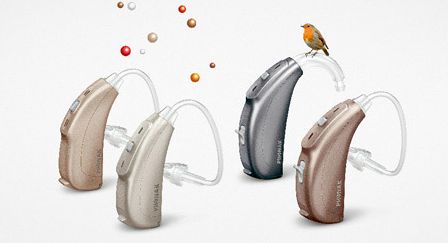For people with different hearing loss who have the same hearing and daily hearing difficulties, the hearing aid effect will be different after using the same hearing aid. Why is this? What are the effects of hearing aids?

What is the daily performance of 01 with different levels of hearing loss?
Mild: Hearing loss is occasionally unclear and obvious in noisy environments;
Moderate: Hearing loss is OK at close range, but alternative words and misinterpretations occur; hearing aids are very effective for them;
Severe: Hearing loss can be heard loudly, but in a noisy environment, their residual hearing is acceptable, and the effect of wearing a hearing aid is better;
Extremely heavy: You can hear loud and near sounds, and the effect of wearing a hearing aid depends entirely on the residual hearing and resolution of the hearing loss. If the resolution is poor, the effect of wearing a hearing aid is not ideal, and other senses may be needed.
What is the effect of 2 hearing loss gradient on wearing a hearing aid?
Most of the hearing curves are flat or gradual, while steep drop, groove or irregular are rare, and low frequency dips and debris are rare. The flatter the audiogram, the better the hearing aid is.
What is the impact of 3 speech resolution on hearing aid effects?
Speech resolution ≥ 90% works well
Speech resolution 70-90% has a slight improvement
Speech resolution 50-70% has substantial improvement
Speech resolution ≤ 50% is not ideal
What are the disadvantages of the 4 single ear option?
Single ear matching refers to bilateral hearing loss but only one hearing aid is selected, and its side effects are shadowing effect and hearing deprivation effect.
What are the benefits of 5 binaural options?
In general, binaural matching is recommended as long as the hearing loss of both ears is reduced and there are no contraindications for binaural matching. When the ears are worn with Siemens hearing aids, the direction of the sound source can be judged when the sound is felt, the range of the listening sound is obviously enlarged, and the speech clarity under the noise environment is improved. The heavier the hearing loss, the more important the binaural selection.
6 What is an omnidirectional microphone?
The omnidirectional microphone is equally accommodating in all directions and is suitable for quiet environments. In the speech environment of noise, omnidirectionality can enlarge the speech and the surrounding noise in an equal amount, which is not conducive to the understanding of speech.
7 What is a directional microphone?
The directional microphone has two microphones, one after the other. Directional microphones are classified according to the polarity map. There are many forms. For example, the heart-shaped mode is much more sensitive to the sound coming from the front than the sound coming from behind, and is suitable for the speech environment in noise.
What is 8 linear amplification?
Linear amplification is the output of a constant amplification of the input signal until saturation is achieved. Siemens hearing aids have an inherent maximum output level beyond which the amplification stops automatically. Linear amplification is common in older hearing aids and is suitable for hearing loss users who require a large amount of hearing aid amplification. At present, linear amplification lines are not common because of damage to the hearing loss of hearing loss.
What is 9 compression technology?
Compression technology, that is, non-linear amplification, by manually or automatically changing the compression inflection point and compression ratio, controlling the amount of gain of different intensity input signals, not only makes the loud sound acceptable, but also the ambient noise and microphone noise will not become a kind of interference. This greatly improves the hearing satisfaction of hearing impaired people. Compressed lines are currently the most widely used technology.
What are the advantages of 10 digital signal processing?
Digital signal processing is to convert the acoustic signal into an analog signal represented by 0 and 1, and then process it. The advantage of this digital signal is that its essence is quite simple, and many complex calculations can be performed on it. And through proper sampling and analysis, the digital signal does not have distortion problems. The digital platform provides a variety of working modes of the microphone, omnidirectionality, directivity, self-adaptability, etc. Its purpose is to improve speech intelligibility in a noisy environment and improve the wearing of hearing aids.
Jinghao medical hearing aid reminder:Hearing aids need to be professionally “fitted”. It is very important to choose a professional hearing aid fitting center and hearing aid fittings! You can call the Jinghao medical for any hearing problems, or you can come to the center to experience the experience. . Hearing aid free consultation phone: +86-18566295705
You can also scan our WeChat public account for more information about hearing.

Link:What is the effect of hearing aids?
REF: Hearing Aids, Hearing amplifier, ITE hearing aidsThe article comes from the Internet. If there is any infringement, please contact [email protected] to delete it.




